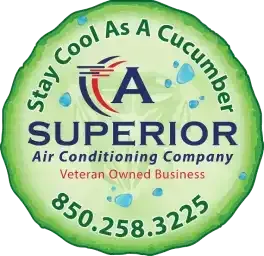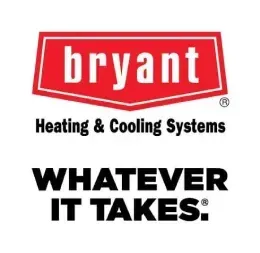
Understanding Indoor Air Quality
Common Indoor Pollutants
Indoor air quality is often compromised by a variety of pollutants that can infiltrate our homes. Common indoor pollutants include dust, pet dander, mold, volatile organic compounds (VOCs), and carbon monoxide. Dust and pet dander are everyday nuisances that can accumulate on surfaces and in the air, especially in homes with pets. Mold, on the other hand, thrives in damp environments and can release spores that are harmful when inhaled. VOCs are emitted from household products like paints, cleaning supplies, and even furniture, contributing to indoor pollution. Carbon monoxide, a colorless and odorless gas, can be particularly dangerous, often originating from faulty heating systems or gas appliances. Understanding these pollutants and their sources is the first step in mitigating their impact on indoor air quality.
The health effects of these pollutants can be significant. Dust and pet dander can trigger allergies and asthma attacks, while mold exposure can lead to respiratory issues and exacerbate conditions like asthma. VOCs have been linked to headaches, dizziness, and even long-term health effects such as liver and kidney damage. Carbon monoxide poisoning is a severe risk, with symptoms ranging from headaches and dizziness to, in extreme cases, death. By recognizing these common indoor pollutants and their potential health impacts, homeowners can take proactive steps to improve their indoor air quality and safeguard their health.
Health Impacts of Poor Indoor Air Quality
The health impacts of poor indoor air quality are both immediate and long-term, affecting individuals of all ages. Short-term effects often include respiratory issues such as coughing, sneezing, and shortness of breath. Allergies can be exacerbated by indoor pollutants, leading to symptoms like itchy eyes, runny nose, and skin rashes. For individuals with asthma, poor indoor air quality can trigger more frequent and severe attacks, making it difficult to breathe and potentially leading to emergency medical situations. Children and the elderly are particularly vulnerable to these short-term health effects, as their immune systems may not be as robust.
Long-term exposure to poor indoor air quality can lead to chronic health conditions. Studies have shown that prolonged exposure to indoor pollutants can contribute to the development of respiratory diseases, cardiovascular issues, and even certain cancers. For instance, long-term exposure to VOCs has been linked to liver and kidney damage, while mold exposure can lead to chronic respiratory conditions. According to the Environmental Protection Agency (EPA), indoor air pollution is among the top five environmental risks to public health. By understanding these health impacts, homeowners can prioritize improving their indoor air quality to protect their long-term health and well-being.
Identifying and Reducing Sources of Pollution
Eliminating Tobacco Smoke
One of the most significant sources of indoor air pollution is tobacco smoke. Secondhand smoke contains over 7,000 chemicals, many of which are toxic and can cause cancer. The dangers of secondhand smoke are well-documented, with exposure leading to respiratory infections, asthma attacks, and even sudden infant death syndrome (SIDS) in children. To keep your home smoke-free, it is crucial to establish designated smoking areas outside the home. Encourage smokers to use these areas and provide them with ashtrays to prevent littering. Additionally, consider implementing a strict no-smoking policy inside the home to protect all occupants from the harmful effects of secondhand smoke.
Creating a smoke-free home environment involves more than just setting rules; it also requires ongoing vigilance and support. Educate family members and visitors about the dangers of secondhand smoke and the importance of maintaining a smoke-free home. Provide resources for those who wish to quit smoking, such as information on smoking cessation programs and support groups. By taking these steps, you can significantly reduce the levels of indoor air pollution caused by tobacco smoke and create a healthier living environment for everyone in your home.
Managing Household Chemicals
Household chemicals are another common source of indoor air pollution. Many cleaning products, paints, and maintenance supplies contain VOCs that can be harmful when inhaled. To reduce indoor air pollution from household chemicals, opt for low-VOC or VOC-free products whenever possible. These products are designed to minimize the release of harmful chemicals into the air, making them a safer choice for your home. Additionally, always follow the manufacturer's instructions for use and ensure proper ventilation when using these products to further reduce exposure.
Proper storage and disposal of household chemicals are also crucial in managing indoor air quality. Store chemicals in their original containers with labels intact, and keep them in a well-ventilated area away from living spaces. Dispose of unused or expired chemicals according to local regulations, as improper disposal can lead to environmental contamination and pose health risks. By adopting these practices, you can effectively manage household chemicals and reduce their impact on indoor air quality.
Controlling Pet Dander and Dust Mites
Pets bring joy and companionship to our lives, but they can also contribute to indoor air pollution through pet dander. Pet dander consists of tiny, even microscopic, flecks of skin shed by cats, dogs, rodents, birds, and other animals with fur or feathers. These particles can trigger allergic reactions and asthma symptoms. To reduce pet dander, groom your pets regularly and bathe them as needed. Use a vacuum cleaner with a HEPA filter to capture dander from carpets, upholstery, and other surfaces. Additionally, consider using air purifiers designed to capture pet allergens to further improve indoor air quality.
Dust mites are another common indoor allergen that can impact air quality. These tiny creatures thrive in warm, humid environments and are often found in bedding, upholstered furniture, and carpets. To control dust mites, wash bedding in hot water weekly and use allergen-proof mattress and pillow covers. Reduce humidity levels in your home by using dehumidifiers and ensuring proper ventilation. Regularly clean and vacuum your home, paying special attention to areas where dust mites are likely to accumulate. By implementing these practices, you can effectively reduce pet dander and dust mites, leading to improved indoor air quality.
Improving Ventilation
Natural Ventilation Techniques
Natural ventilation is an effective way to improve indoor air quality by allowing fresh air to circulate throughout your home. Opening windows and doors is the simplest method of natural ventilation, helping to remove indoor pollutants and bring in fresh air. To maximize airflow, consider using exhaust fans in kitchens and bathrooms, where pollutants and moisture levels are typically higher. Cross-ventilation, achieved by opening windows on opposite sides of a room or building, can create a natural breeze that enhances air circulation and improves indoor air quality.
The benefits of natural ventilation extend beyond just improving air quality. It can also help regulate indoor temperatures, reduce humidity levels, and lower energy costs by reducing the need for mechanical cooling and heating systems. To achieve effective natural ventilation, strategically place windows and vents to facilitate airflow and consider using window treatments that allow for ventilation while maintaining privacy. By incorporating natural ventilation techniques into your home, you can create a healthier and more comfortable living environment.
Mechanical Ventilation Systems
While natural ventilation is beneficial, mechanical ventilation systems offer a more controlled and consistent approach to improving indoor air quality. Heat Recovery Ventilators (HRVs) and Energy Recovery Ventilators (ERVs) are popular options that help maintain indoor air quality by exchanging stale indoor air with fresh outdoor air. HRVs transfer heat from the outgoing air to the incoming air, making them ideal for colder climates. ERVs, on the other hand, transfer both heat and moisture, making them suitable for a wider range of climates.
Choosing the right mechanical ventilation system for your home depends on factors such as climate, home size, and specific air quality needs. Regular maintenance is essential to ensure the system operates efficiently. This includes cleaning or replacing filters, checking for blockages, and ensuring that vents are not obstructed. By investing in a mechanical ventilation system and maintaining it properly, you can significantly improve indoor air quality and create a healthier living environment.
Kitchen and Bathroom Ventilation
Kitchens and bathrooms are hotspots for indoor pollutants and moisture, making proper ventilation in these areas crucial. In kitchens, cooking can release smoke, grease, and odors into the air, while bathrooms are prone to high humidity levels that can lead to mold growth. Installing and maintaining exhaust fans in these areas can help remove pollutants and moisture, improving indoor air quality. Choose exhaust fans with the appropriate capacity for the size of the room and ensure they vent to the outside, not just into the attic or another part of the home.
Regular maintenance of kitchen and bathroom exhaust fans is essential to ensure they function effectively. Clean the fan blades and grills regularly to prevent the buildup of grease and dust. Check for any blockages in the venting system and ensure that the fans are operating at their optimal capacity. By prioritizing proper ventilation in kitchens and bathrooms, you can reduce indoor pollutants and humidity levels, contributing to a healthier home environment.
Utilizing Air Purification Technologies
Types of Air Purifiers
Air purifiers are an effective tool for improving indoor air quality by removing pollutants from the air. There are several types of air purifiers, each with its own set of advantages and disadvantages. HEPA (High-Efficiency Particulate Air) filters are highly effective at capturing particles as small as 0.3 microns, making them ideal for removing dust, pet dander, and pollen. Activated carbon filters are excellent at removing odors and VOCs, while UV-C light purifiers use ultraviolet light to kill bacteria and viruses. Each type of air purifier has its strengths, and the best choice depends on the specific pollutants you need to address.
When selecting an air purifier, consider factors such as room size, the specific pollutants you want to target, and maintenance requirements. Some air purifiers combine multiple technologies, such as HEPA and activated carbon filters, to provide comprehensive air cleaning. By understanding the different types of air purifiers and their effectiveness, you can choose the best option for your home and improve indoor air quality.
Placement and Maintenance of Air Purifiers
The placement of air purifiers is crucial for maximizing their efficiency. Place air purifiers in areas where you spend the most time, such as bedrooms and living rooms. Ensure that the air purifier has enough space around it for proper airflow and avoid placing it in corners or behind furniture. For larger homes, consider using multiple air purifiers to cover different areas effectively. Proper placement can significantly enhance the performance of air purifiers and improve indoor air quality.
Regular maintenance is essential to keep air purifiers functioning effectively. Follow the manufacturer's guidelines for filter replacement and cleaning schedules. HEPA filters typically need to be replaced every 6-12 months, while activated carbon filters may need more frequent replacement depending on usage. Clean the exterior and air intake vents regularly to prevent dust buildup. By maintaining your air purifiers properly, you can ensure they continue to provide clean and healthy air for your home.
Houseplants for Air Purification
Houseplants are a natural and aesthetically pleasing way to improve indoor air quality. Certain plants are known for their air-purifying properties, such as spider plants, peace lilies, and snake plants. These plants can absorb pollutants like formaldehyde, benzene, and trichloroethylene, helping to clean the air in your home. In addition to their air-purifying benefits, houseplants can also enhance the overall ambiance and aesthetic of your living space.
Caring for air-purifying houseplants involves providing the right conditions for growth. Most of these plants thrive in indirect sunlight and require regular watering, but be careful not to overwater. Ensure proper drainage to prevent root rot and consider using a well-draining potting mix. By incorporating houseplants into your home, you can naturally improve indoor air quality while adding a touch of greenery to your living space.
Regular Maintenance and Monitoring
Routine Cleaning Practices
Routine cleaning practices are essential for maintaining good indoor air quality. Dust and allergens can accumulate on surfaces, carpets, and upholstery, contributing to poor air quality. Use a vacuum cleaner with a HEPA filter to effectively capture dust and allergens from floors and furniture. Microfiber cloths are excellent for dusting, as they can trap dust particles without spreading them into the air. Establish a regular cleaning schedule to keep your home free from dust and allergens, focusing on high-traffic areas and places where dust tends to accumulate.
In addition to regular cleaning, consider implementing practices that reduce the introduction of pollutants into your home. Encourage family members and guests to remove their shoes at the door to prevent tracking in dirt and allergens. Use doormats to trap dirt and dust before it enters your home. By adopting these routine cleaning practices, you can significantly reduce indoor pollutants and maintain a healthier living environment.
Monitoring Indoor Air Quality
Monitoring indoor air quality is an important step in maintaining a healthy home environment. Various tools and devices are available to help you keep track of indoor air quality, such as air quality sensors and smart home systems. These devices can measure levels of pollutants like VOCs, carbon dioxide, and particulate matter, providing real-time data on air quality. Some smart home systems can even integrate with your HVAC system to automatically adjust ventilation based on air quality readings.
Interpreting the data from air quality monitors can help you take appropriate actions to improve indoor air quality. For example, if VOC levels are high, you may need to increase ventilation or reduce the use of certain household products. If particulate matter levels are elevated, consider using air purifiers or increasing cleaning frequency. By monitoring indoor air quality and responding to the data, you can create a healthier living environment for your family.
Seasonal Maintenance Tips
Seasonal maintenance is crucial for maintaining good indoor air quality throughout the year. In the spring and summer, pollen levels can be high, so keep windows and doors closed during peak pollen times and use air purifiers to reduce indoor pollen levels. Regularly change HVAC filters to ensure they effectively capture pollutants and maintain proper airflow. Check for mold growth in damp areas like basements and bathrooms, and address any moisture issues promptly.
In the fall and winter, indoor air quality can be affected by increased use of heating systems and reduced ventilation. Ensure your heating system is well-maintained and clean, as dirty systems can circulate dust and pollutants. Use a humidifier to maintain optimal humidity levels, as dry air can exacerbate respiratory issues. Schedule professional maintenance services to inspect and clean your HVAC system, ensuring it operates efficiently and effectively. By following these seasonal maintenance tips, you can maintain good indoor air quality year-round.
A Superior Air Conditioning Company
Improving indoor air quality is essential for creating a healthy and comfortable living environment. At A Superior Air Conditioning Company, we are committed to helping you achieve the best indoor air quality possible. Our expert team in Panama City Beach, FL, offers a range of services, including HVAC maintenance, air purifier installation, and ventilation solutions tailored to your needs. today to learn more about how we can help you improve your home's air quality and ensure a healthier living space for you and your family. Don't wait—take the first step towards better indoor air quality by reaching out to us now!
A Superior Air Conditioning Company Blog





